Tapioca is flavorless starchy ingredient produced from native to South America dried bitter-cassava (Manihot esculenta: manioc, mandioca, manihot, aipim, macexeira, manioca, boba, yuca, yucca, kappa) root. It is similar to sago which is made from sago palm tree.
There are different sizes and colour of tapioca available in the shops. On the picture below you can see small tapioca pearls, then sago and large black and rainbow tapioca pearls.
To form the black tapioca pearls for bubble tea, the tapioca starch is heated with water and caramel to a thick paste, which is then run through moist sieves to form pellets of different sizes.
Small 2mm in diameter tapioca is commonly used for desserts such as pudding make with milk. You can take a look at one of the recipes here: “Tapioca Pudding with Banana Custard and Toasted Pecans”. Large tapioca pearls are used to make Taiwanese drinks such as Bubble Tea, or Boba Milk Tea, please take a look at the recipe here: “Bubble Tea / Boba”. Sago seeds can be used most of the time the same way small tapioca pearls are used, to make puddings. Cassava flour (tapioca flour or tapioca starch) is commonly used as a food thickener, and is also used as a binder in pharmaceutical tablets and natural paints. Tapioca starch is gluten-free. Boba looks the same like large tapioca starch but it is made from yam starch.
In Brazilian cuisine, tapioca is used for different types of meals. The tapioca is stirred, drained through a sieve, fried into a tortilla shape, and often sprinkled with coconut. Then it may be buttered and eaten as a toast (its most common use as a breakfast dish), or it may be filled or topped with either sweet or salty ingredients, which define the kind of meal the tapioca is used for: breakfast, afternoon tea or dessert. Choices range from butter, cheese, chocolate, bananas with condensed milk, chocolate with bananas, to various forms of meats and served warm. A restaurant which specializes in tapioca-based dishes is called in Brazil a “tapiocaria”.
Small white tapioca pearls have to cooked in water for 25-40 minutes, large tapioca pearls / boba are partially cooked already and require only 3-5 minutes cooking.
- Most information source: Wikipedia and Bruce and Clark.
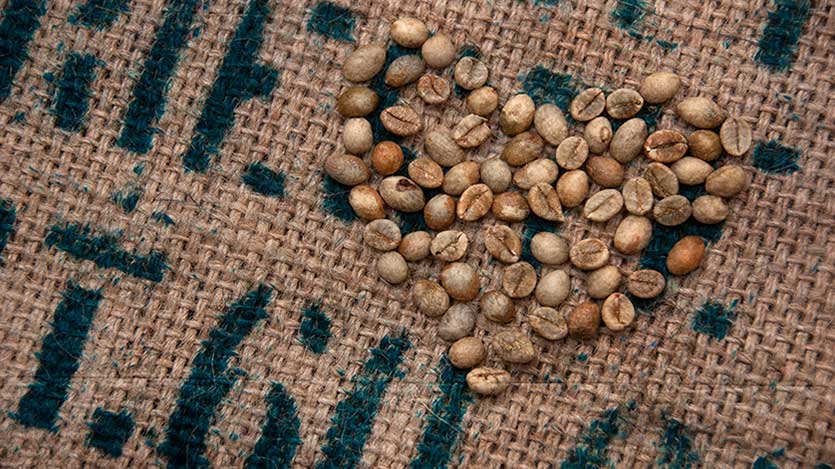
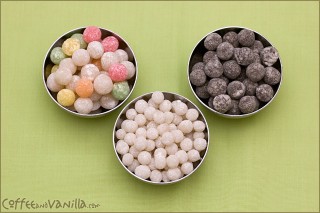
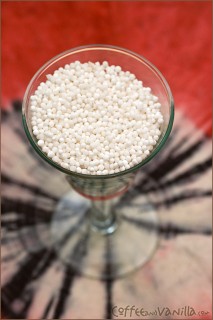
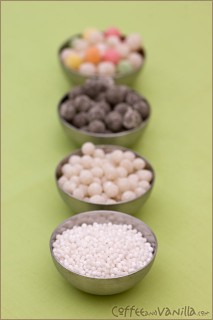
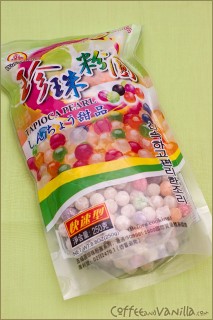
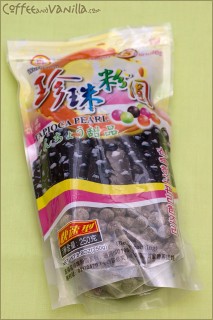
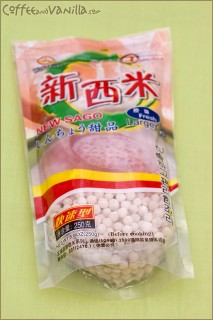
What a great post! I absolutely adore bubble tea!
A ha, your on the boba train! We just love them around here!
I was looking for large tapioca pearls for a while now and finally I got it in China town… kids love it! :)
Is it possible to use the small 2mm seed tapioca in bubble tea also?
Nick – I have never tried to use small tapioca to make bubble tea, it is possible it will turn into pudding… Those small pearls require longer cooking than big ones, that are already half prepared.
But you can use them for tapioca pudding, here is one of the recipes:
https://www.coffeeandvanilla.com/?p=2749
I know this entry was posted over 2 years ago, but could you tell me if it’s possible to do make bubble tea with sago, and how to do so?
Thanks!
I’m sure you can cook it the same way, in water for couple for minutues or according to the instructions on the package. Sago is much smaller than bubble tea perarls, so it is possible it will stick together, will turn into pudding like tapioca.